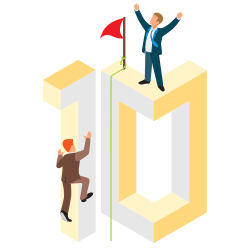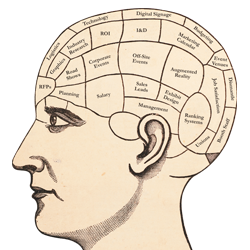|
REGISTRATION REQUIRED
research
Operational Intel:
Benchmark Data on Lead Practices Technology and automation appear to be transforming the lead-retrieval and -management process. But despite the high value placed on lead generation, fewer exhibitors are training staffers on qualification techniques than in the past. By Travis Stanton
According to The 2018 Marketing Spend Decision Report from the Center for Exhibition Industry Research, 95 percent of companies say lead acquisition is one of their most important exhibit-marketing objectives. The report also indicates that the number of new qualified leads is among the primary metrics used to measure success at a show. But despite the critical importance of sales leads to the value proposition of face-to-face marketing, many exhibitors report that the collection, qualification, and follow-up processes associated with lead management are fraught with challenges and confusion.
So to shed some light on lead management and provide industry averages to help you make informed decisions, EXHIBITOR conducted its 2020 Sales Lead Survey. Marketers from nearly 150 different organizations responded, and their answers were compared to benchmark data obtained from the 2010 and 2015 iterations of the same survey. According to the data, it appears rising adoption of automation and technology is transforming the way leads are retrieved, qualified, and managed. There has been a significant decrease in manual collection methods such as paper lead forms and a corresponding increase in the use of lead-retrieval apps. Similarly, the percentage of exhibiting companies using technology to automatically rank or score leads has more than doubled since 2015, and the percentage ranking leads via electronic surveys has more than tripled. Automation is also impacting lead follow-up, as the percentage of companies using automated emails as their initial communication channel is up from 19 percent in 2015 to 35 percent in 2020. In that same vein, 75 percent of exhibitors now use customer relationship management (CRM) systems versus just 58 percent five years ago. Technology has also enabled more companies to track leads from their origination at trade shows and events throughout the sales cycle. In 2010, just 28 percent of respondents were able to do that, compared to 49 percent today. Another interesting finding is that marketing departments are taking greater ownership of the lead-management process. In 2015, 56 percent of respondents said that sales reps were responsible for tracking the status of leads and reporting conversion rates. Today, that figure has dropped to 23 percent, as the majority (53 percent) now say that function is marketing's responsibility. Despite the value placed on lead generation, fewer exhibitors are training staffers on how to qualify attendees. In 2010, 82 percent of respondents claimed they trained staffers on effective lead-qualification techniques. That number has steadily decreased, falling to 67 percent in 2015 and 55 percent today. 
|
|
|
||||||||||||||||||||||||||||
|
|
||||||||||||||||||||||||||||
|
TOPICS Measurement & Budgeting Planning & Execution Marketing & Promotion Events & Venues Personal & Career Exhibits & Experiences International Exhibiting Resources for Rookies Research & Resources |
MAGAZINE Subscribe Today! Renew Subscription Update Address Digital Downloads Newsletters Advertise |
FIND IT Exhibit Producers Products & Services All Companies Get Listed |
EXHIBITORLIVE Sessions Exhibit Hall Exhibit at the Show Registration |
ETRAK Sessions Certification F.A.Q. Registration |
EDUCATION WEEK Overview Sessions Hotel Registration |
CERTIFICATION The Program Steps to Certification Faculty and Staff Enroll in CTSM Submit Quiz Answers My CTSM |
AWARDS Exhibit Design Awards Portable/Modular Awards Corporate Event Awards Centers of Excellence |
NEWS Associations/Press Awards Company News International New Products People Shows & Events Venues & Destinations EXHIBITOR News |
||||||||||||||||||||
|
||||||||||||||||||||||||||||






